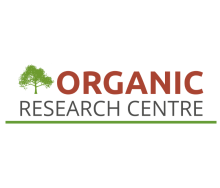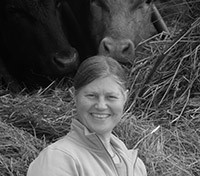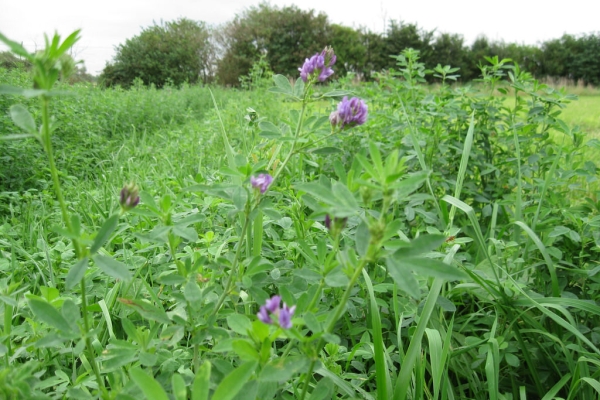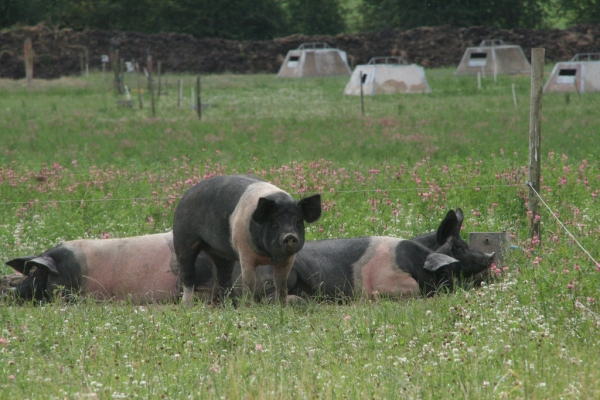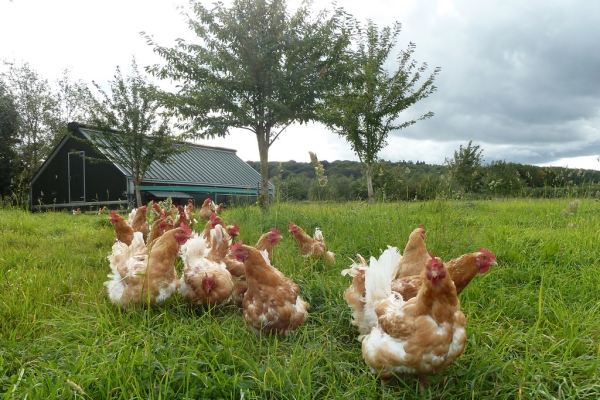Feeding pigs and poultry on 100% organic and regional feed – what have we learned in the OK-Net EcoFeed project?
Background
For organic pig and poultry farmers, living up to the ideal of feeding 100% regional and organic feed is difficult and especially for protein that fulfils amino acid requirements (cysteine, lysine and methionine most notably). Balanced diets are important, not just for healthy growth and production, but also for animal welfare where, for example, an imbalance can lead to feather pecking and cannibalism in poultry. With a shortfall in amino acid content, proteins are typically overfed, leading to a waste of resources and environmental pollution through excessive nitrogen excretion. Furthermore, some of the preferred feedstuffs, including wheat and soya, rely heavily on imports.
OK-Net EcoFeed project
Over the last three years, a group of stakeholders including researchers, farmers, advisors and processors from 11 European countries have all been working together to help find and test solutions that work in a regional and systems context. Innovation Groups (IGs) were created in 8 countries to test potential solutions.
Innovation Groups
In all, the Innovation Groups tested 18 tools reflecting the interests, opportunities and barriers faced by each group. For example, in Denmark, there has been great interest and investment in developing green protein from bio-refined clover-grass leys. In Spain, there are significant ecological and cultural restrictions to producing crops for growing organic pigs, fattened on acorns in the Dehesa agroforestry system. The feeding of 100% organic and regional feed is ‘challenged’ at multiple levels and the 18 tools tested here addressed 6 challenges in all which were Growing, Processing, Nutritional Value, Ration Planning, Feeding and Animal Health (including behaviour and welfare).
Some test results
Utilising existing protein sources
For layers, the UK test looked at producing green vegetation during winter and forced housing events. Sprouting equipment was developed on-farm, testing wheat and vetch sprouts. Sprouting triggered the breakdown of antinutritional factors in the vetch seeds, and amino acid profiles were not affected.
Cereal crops were cleaned to avoid penalties and weed spreading, and the tailings were tested as a broiler feed in the UK. There was no loss of nutrition in smaller and broken grains and, compared to cleaned grain, the tailings had higher protein, sugar and oil content, as well as an increase in important amino acids.
By-products
The IG in Spain tested by-products as a feed source for growing pigs. Brewer’s yeast and grain are high in protein but storage is short-lived and costly in liquid form. Mixing with wheat straw and ensiling turned it into a stable and storable feed that was attractive to the pigs.
Ration planning
In France, the Broiler IG tested finisher bird feeds with a mix of locally produced protein including camelina cake, rapeseed expeller and sunflower expeller – replacing the soya. The tested feed fulfilled dietary requirements without increasing feed costs.
The trial for layers in France noted that soya is less easily replaced in egg production and focussed on diets of 100% organic origin. Total eggs per bird was 290 for the tested feed compared to 300 for the control feed (95% organic). The tested feed was 6% more costly but, with direct sales, the customers accepted the price increase.
Range utilisation and foraged feed
In Germany, alfalfa and white and red clover varieties were planted in strips to observe the hens’ feeding preferences. Alfalfa offered protein and, with a higher sugar content, there was a marginal preference for white clover.
Rather than grow, harvest and store crops to feed fattening pigs, a farmer in France trialled a ‘mob grazing’ system with protein-rich plants including moha, clovers, maize and beans. The pigs adapted to cell grazing and a single strand of electric tape contained them. Concentrate rationing led to leaner carcasses, but balancing concentrates and forage is important in order to avoid lower finishing weights.
For hungry gestating sows, a farmer in Sweden tested growing forage turnips (Barkant brassica Turnip). The turnips offered a bulky feed to help satisfy hunger, behavioural enrichment and reduced damage from rooting behaviour.
Rediscovering old crops
In Italy, the IG tested growing, processing and feeding camelina cake to laying hens. Low leaf coverage promoted weed growth and the small seed size required accurate drill settings and slow harvesting speeds. In feeding trials with pressed cake, production costs were reduced, the eggs had higher omega-3 content, and the hens had a longer productive life.
Hi-tech
Clover-grass protein extract has a good amino acid profile for poultry but the fresh paste has a very short shelf life and drying is expensive. The trial in Denmark tested anaerobic storage at 24oC or 4oC for six months. Protein and amino acid content increased during storage. At 24oC, there were higher levels of undesirable clostridia bacteria. The quality could be maintained for 2 months at 24oC and 3 months at 4oC.
Gut health
The benefits of feeding silage are well established for pig gut health and a Swedish IG tested feeding chicory silage to weaning piglets. Chicory contains a high level of pectin which promotes beneficial bacteria in the gut. Silage also promotes foraging and rooting behaviour, reducing the piglets’ stress levels. Piglets on chicory silage gained more weight than those fed grass-clover silage or no silage.
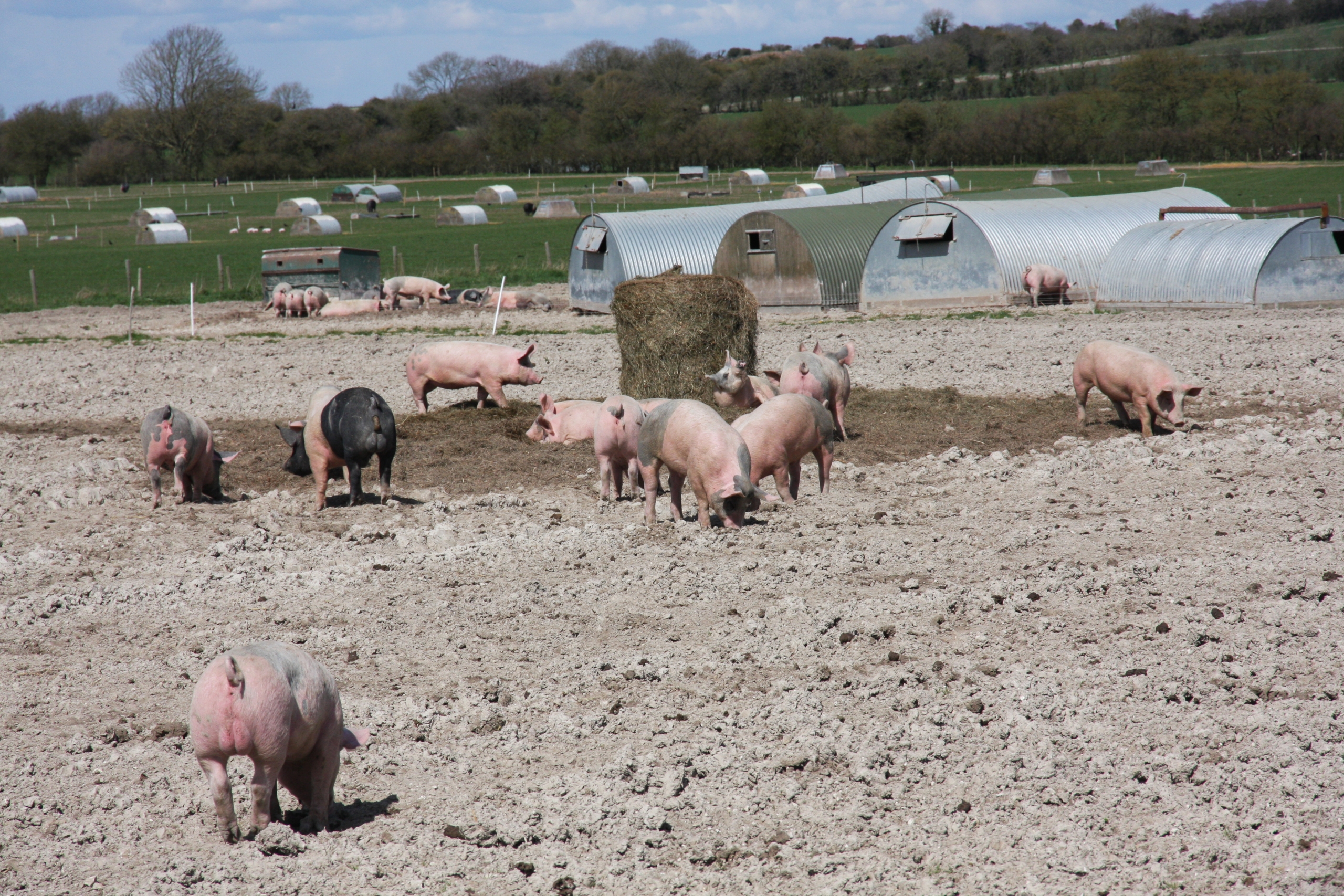
Practical feeding
In Sweden, finisher pigs fed on a liquid feed were offered additional silage in a separate trough. The silage increased positive activity and reduced anxiety at feeding time but, although the pigs chewed a lot on the silage, they did not swallow the most fibrous parts.
Quality control
Correct processing of soya beans is important since underheating won’t deactivate anti-nutritive components and overheating damages the amino acids. The Innovation Group in Austria tested soya samples from processors across Europe showing that near-infrared spectroscopy (NIRS) offers a cheaper, quicker and reliable monitoring process than wet chemistry analysis.
Sharing learning
For the 18 tested tools, videos and a user-friendly Practice Abstract have been created and over 100 Practice Abstracts have also been created from existing knowledge. Some foreign-language texts were also translated and, in the UK, the English version of the Danish report ‘Plants and planting designs for organic poultry ranges’ can be found on Agricology here.
To extend the value of findings
To find the Practice Abstracts and videos, have a look at the Organic Farm Knowledge platform where all of the project results, and much more, are available.
Lindsay Whistance writes of herself:
Farming and farm animals have been an interest of mine for so long that I can’t remember when it began. I started milking dairy cows at 17 and continued for several years, both in the UK and in Denmark. I carried on with relief milking and lambing when I returned to education as an adult student. I now work as a Senior Livestock Researcher for the Organic Research Centre, where the sustainability of farming systems is in focus. A quick look in the thesaurus shows that the verb ‘to sustain’ encompasses many aspects that are fundamental to the care of people, animals and the Earth, including to maintain, support, comfort, nurture and give strength to… It is in this kind of world that I wish to live. ‘Why animals do what they do?’ is of great interest to me and observing them can play a big part in our understanding. As the poet William Henry Davies stated, “What is this life if, full of care, We have no time to stand and stare.’
This project has received funding from the European Union’s Horizon 2020 research and innovation programme under grant agreement No 773911. This communication only reflects the author’s view. The Research Executive Agency is not responsible for any use that may be made of the information provided. The authors and editors do not assume responsibility or liability for any possible factual inaccuracies or damage resulting from the application of the information.

Both images courtesy of Lindsay Whistance, All Rights Reserved.

